Key takeaways
- Effective team collaboration relies on clear communication and shared goals, fostering an environment for open ideas and feedback.
- GitLab streamlines the programming workflow by integrating version control, issue tracking, and continuous integration into a single platform, enhancing transparency and collaboration.
- Utilizing merge requests and maintaining open communication are essential for efficient teamwork, while conflict resolution tools empower teams to handle challenges constructively.
- Patience, transparency, and human connection are key lessons learned, emphasizing the importance of thorough reviews and support among team members.
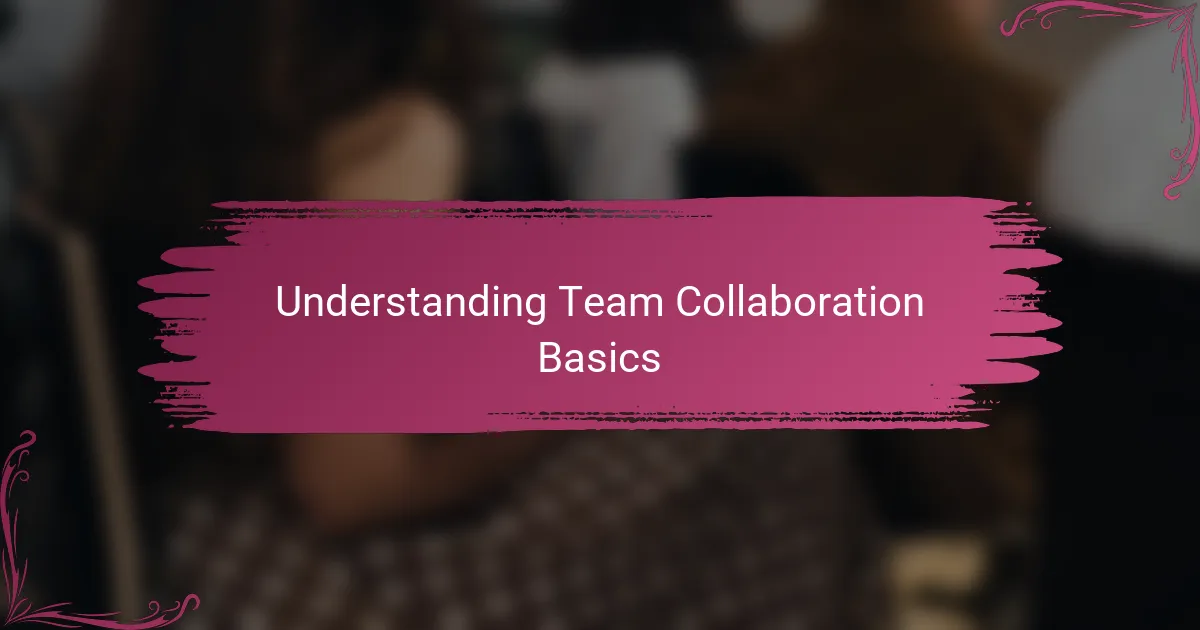
Understanding Team Collaboration Basics
Team collaboration starts with clear communication and shared goals. In my experience, even the best tools can’t replace the value of aligning everyone’s expectations from the outset. Have you ever felt lost in a project because everyone was working with different assumptions? I have, and it was frustrating.
One thing I realized early on is that collaboration isn’t just about dividing tasks—it’s about creating a space where ideas flow openly and feedback is welcomed. When team members support each other like this, it makes the technical challenges feel less daunting.
Understanding these basics changed how I approached projects. It wasn’t just coding; it was about building trust and mutual respect that helped us move forward more smoothly. Don’t you think a project feels more rewarding when everyone is truly on the same page?
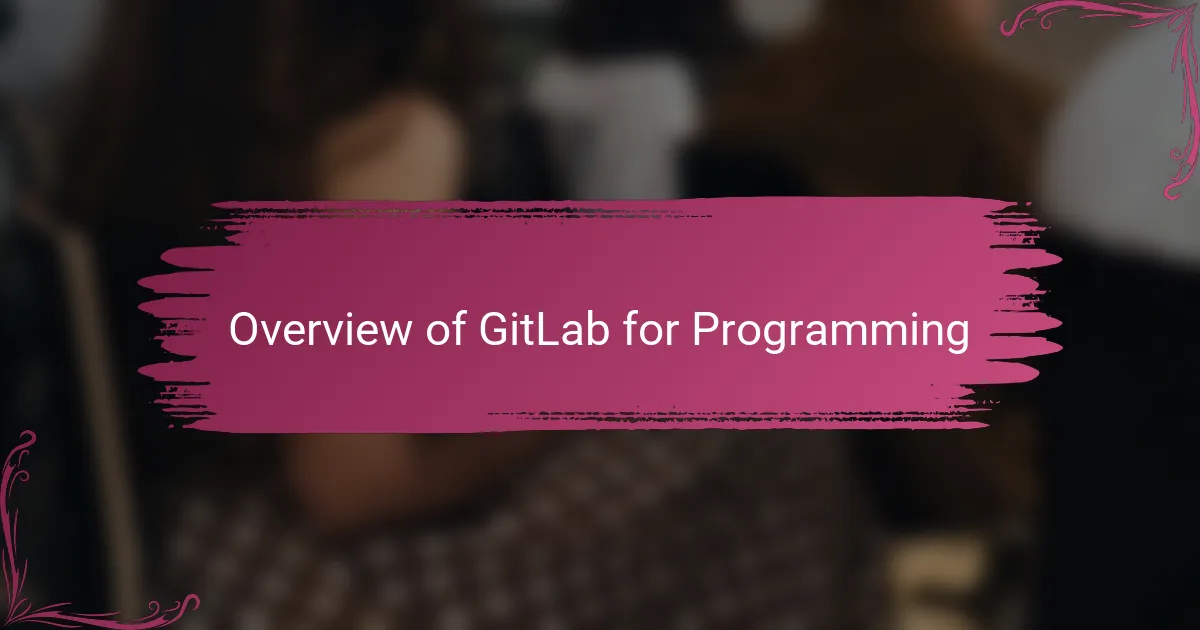
Overview of GitLab for Programming
GitLab, in my experience, is more than just a code repository—it’s a full platform designed to streamline every part of the programming workflow. What struck me first was how it combines version control, issue tracking, and continuous integration all in one place. Have you ever wished for a tool that keeps development, testing, and deployment connected without jumping between multiple apps? GitLab does exactly that.
Using GitLab felt like having a digital workspace where the whole team’s progress is visible and manageable. I remember how this transparency helped us catch mistakes early and adapt quickly, which saved us from last-minute panic. Isn’t it reassuring when you can track changes and discussions without endless email chains?
The way GitLab facilitates branching and merge requests also reshaped how we handled collaboration. Instead of waiting for long reviews, we could iterate faster and get feedback almost in real-time. For me, this shift made programming feel more dynamic and less isolated. Have you tried working like this before? It’s a game changer.
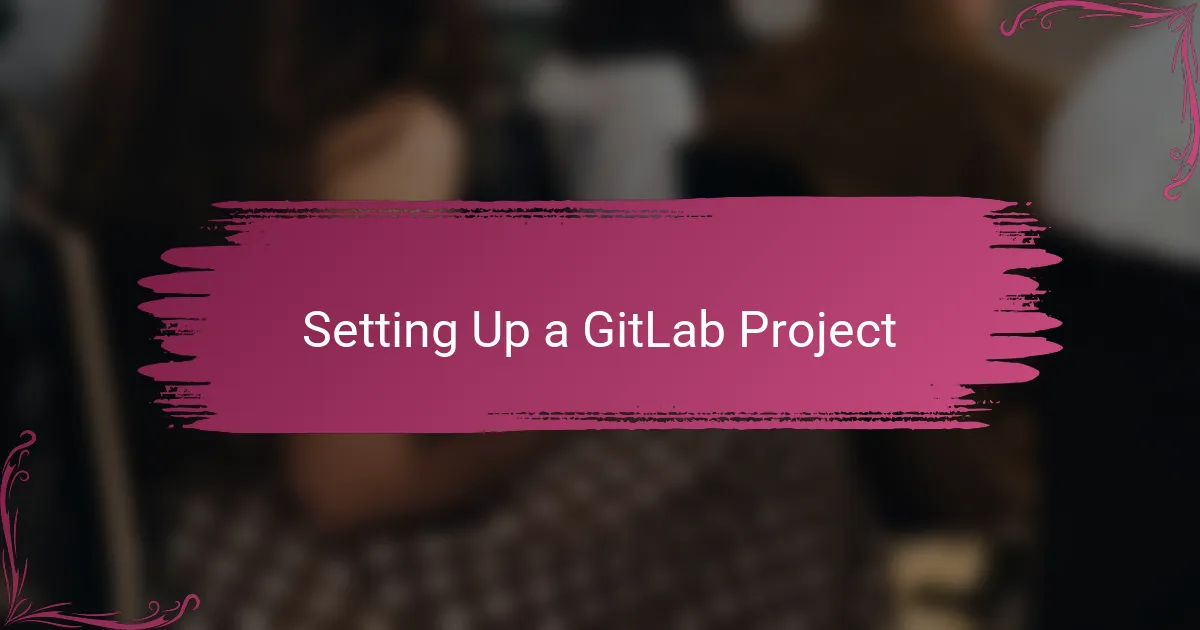
Setting Up a GitLab Project
Setting up a GitLab project was my first real encounter with structuring teamwork in a way that just clicked. I remember creating the initial repository and feeling a mix of excitement and overwhelm—there were so many options to explore. Have you ever stared at a blank setup screen wondering where to start? That was me, but diving in step-by-step helped me see the bigger picture clearly.
The process of defining project visibility—whether public, internal, or private—was eye-opening because it directly influenced how open or secure our collaboration would be. Choosing private gave our team confidence that our codebase was protected, which made sharing and reviewing changes less stressful. Isn’t it amazing how a simple setting can impact trust and comfort levels?
Another detail that stood out was configuring project templates and initial files. Adding a README at the start wasn’t just a formality; for me, it became the team’s first chance to set the tone and share the project’s purpose. I’ve seen firsthand how a clear README keeps everyone aligned, especially when new members join. Do you think a project without guidance feels like wandering in the dark? I definitely do.
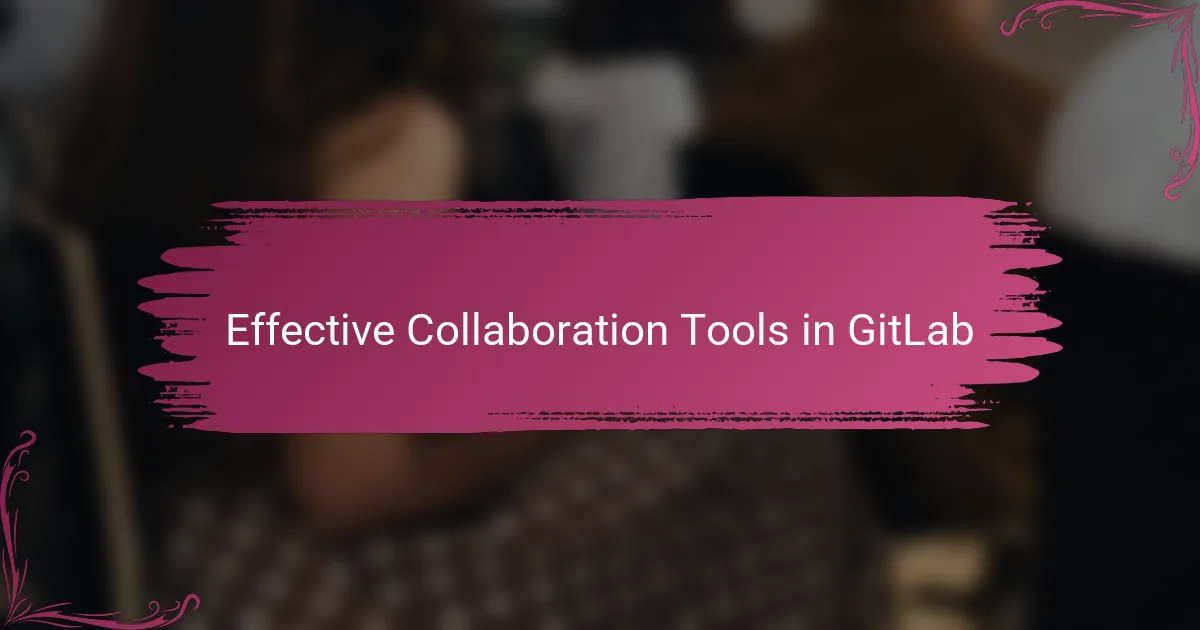
Effective Collaboration Tools in GitLab
One of the features in GitLab that really stood out to me as a game changer was the issue tracking system. It wasn’t just a place to list bugs or tasks—it became our team’s central hub for discussing problems, proposing solutions, and keeping everyone updated. Have you ever been frustrated by lost or forgotten to-dos? Using GitLab’s issue boards helped me eliminate that chaos entirely.
Merge requests are another tool I grew to rely on heavily. They offered a structured way to collaborate on code changes, with inline comments and suggestions that felt like real-time code reviews. I remember a moment when a teammate’s feedback through a merge request helped me spot a subtle bug that I’d completely missed. Doesn’t that kind of peer support make coding feel less daunting and more like a team sport?
Lastly, I can’t skip mentioning GitLab’s integrated CI/CD pipelines. Automating our testing and deployment gave us peace of mind and saved countless hours. Watching a pipeline run after pushing changes was always satisfying—it reassured me that the code we wrote wasn’t just working individually but playing well together. How often have you wished for a safety net to catch errors before they reach production? For me, this was exactly that net.
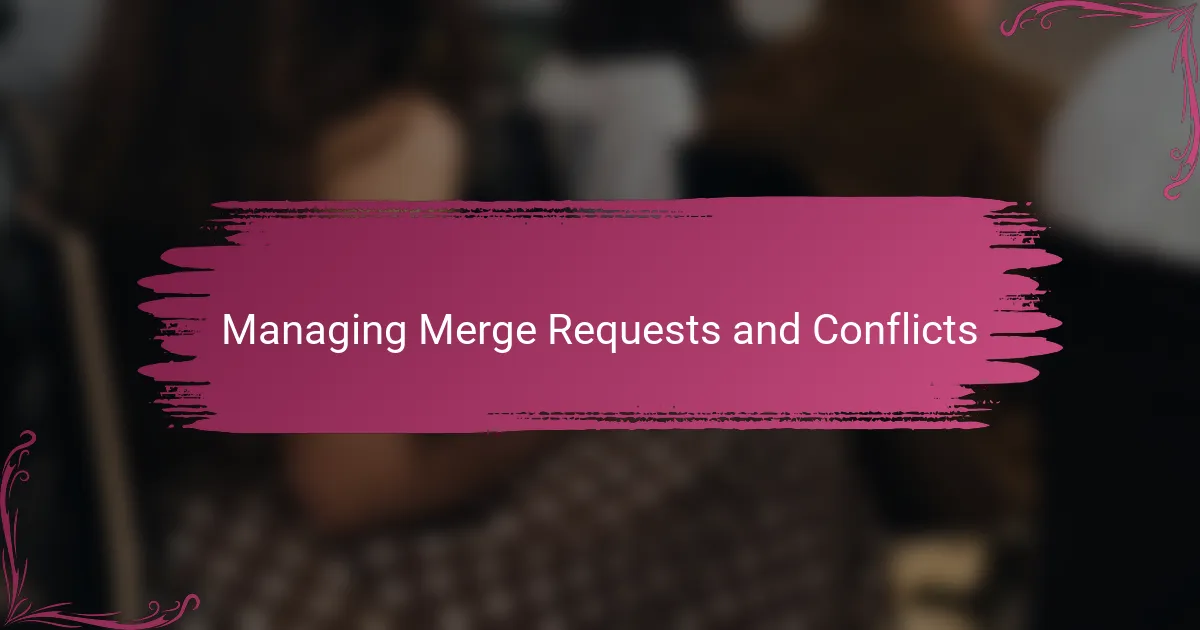
Managing Merge Requests and Conflicts
Managing merge requests on GitLab became a turning point for me in handling teamwork more efficiently. At first, I found the flood of incoming requests overwhelming, but soon I appreciated how they forced us to slow down and review each change thoroughly. Have you ever felt relief after catching an issue during a merge review that could have caused headaches later? That moment of “aha” made me realize how merge requests actually protect the integrity of our code.
Conflicts during merges used to feel like a personal failure, especially when they popped up at the worst times. Over time, I learned that they’re just part of the process when multiple people work on shared code. GitLab’s conflict resolution tools helped me approach these moments without panic. I remember once spending an intense hour resolving a tricky conflict, and afterward, I felt a real sense of accomplishment. Doesn’t it feel empowering when a tough merge ends with everything working smoothly?
One thing I constantly remind my team is to keep communication open during merge requests and conflicts. Leaving clear comments and reaching out early when issues arise made all the difference in preventing small problems from escalating. Collaboration isn’t just about the code—it’s about the conversations that happen around it. Have you noticed how a quick message can save hours of frustration? I certainly have, and that’s why managing merges became less of a chore and more of a shared responsibility.
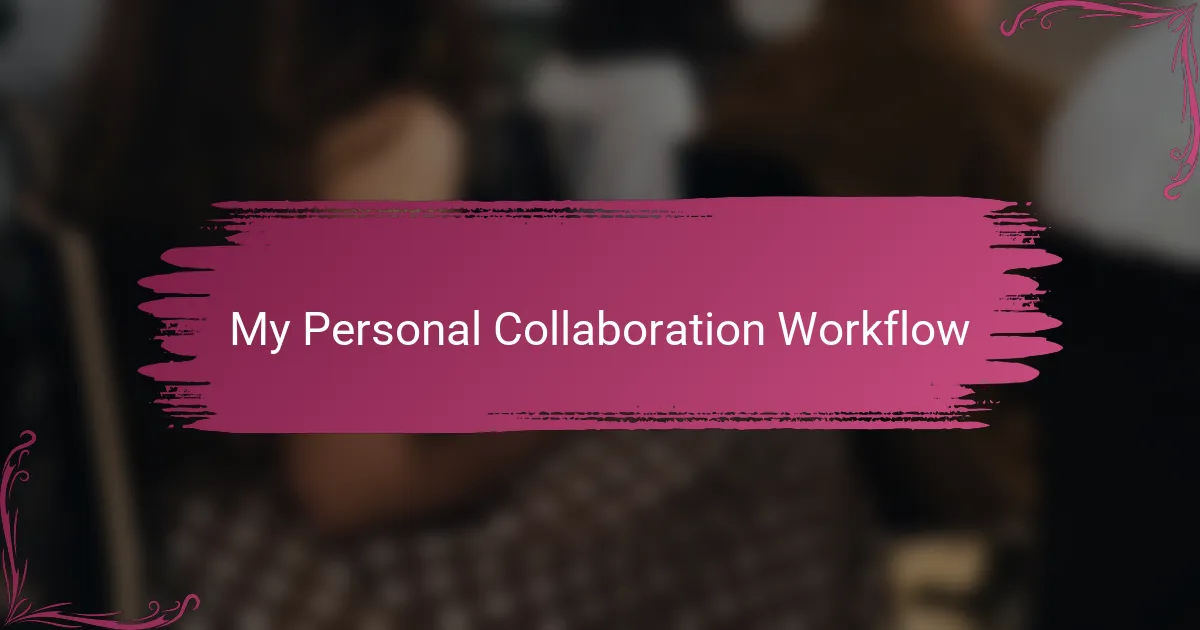
My Personal Collaboration Workflow
For my personal collaboration workflow on GitLab, I rely heavily on creating clear, small branches for each feature or fix. It might sound simple, but breaking work into manageable chunks helps me and the team review changes without feeling overwhelmed. Have you ever tried juggling too many code changes in one go? I learned the hard way that smaller steps make the whole process less stressful.
I also make it a habit to write detailed commit messages explaining not just what I changed, but why. It’s surprising how much time this saves when someone else (or even my future self) tries to understand the context later. I remember a time when a well-written commit message spared us hours of confusion during a tight deadline. Isn’t it nice when every piece of the puzzle falls into place?
Lastly, I embrace the routine of frequent communication through GitLab’s comments on merge requests and issues. I used to hesitate about speaking up for minor clarifications, but now I see those quick exchanges as the backbone of smooth teamwork. Don’t you find that a simple question or suggestion early on can prevent a cascade of headaches down the line? For me, this practice turned collaboration from a series of isolated efforts into a true team journey.

Lessons Learned from GitLab Experience
Looking back on my time using GitLab for team collaboration, one lesson stands out clearly: patience really is a virtue. Early on, I struggled with the sheer volume of notifications and updates flooding in, which sometimes made me feel overwhelmed. But I quickly learned that slowing down to carefully review each piece—not rushing through merge requests or issue comments—actually saved us from costly mistakes and boosted our confidence. Have you ever rushed and then wished you had taken a moment to catch that one little detail?
Another insight I gained was how crucial transparency is. GitLab’s tools revealed parts of the project I never saw before, making it easier to spot bottlenecks or spot where teammates needed support. There was a time when a simple comment on an issue alerted me to a blocker I had missed, allowing us to regroup and adjust priorities before the deadline. Doesn’t it feel great when early warnings help avoid last-minute chaos?
Finally, I realized that no tool, no matter how powerful, replaces human connection in teamwork. GitLab facilitated the process, but it was the conversations—sometimes brief check-ins, sometimes deeper discussions—that made all the difference. I remember one late-night merge request where a teammate’s encouragement and detailed feedback not only fixed the code but lifted my spirits. Have you ever experienced that kind of support that turns a tough challenge into a shared win? That’s the real lesson I took from collaborating on GitLab.